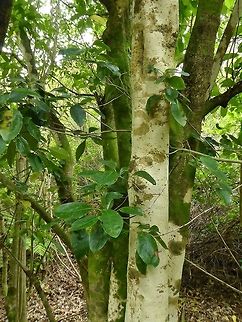
Naming
In former analyses, four subspecies of ''M. ramiflorus'' were recognised: subsp. ''ramiflorus'' of New Zealand, subsp. ''oblongifolius'' of Norfolk Island, subsp. ''fastigiata'' of Fiji and subsp. ''samoensis'' of Samoa and Tonga. More recent studies, especially that by Art Whistler, have indicated that all these subspecies should be regarded as species in their own right.References:
Some text fragments are auto parsed from Wikipedia.